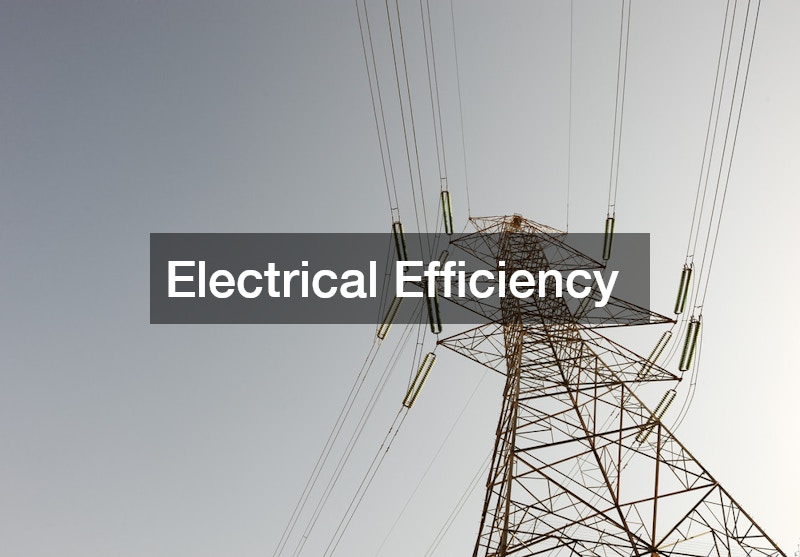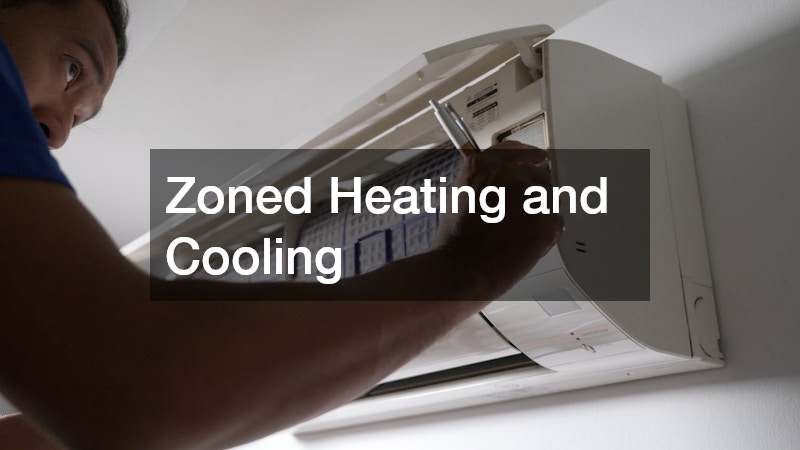
Owning a home often means balancing comfort, style, and financial responsibility. While many homeowners think of renovations as big expenses, some improvements can actually pay for themselves over time. Energy bills, maintenance costs, and repairs add up quickly, which is why making smart choices now can drastically reduce costs later.
That’s where new home upgrades come in. Unlike cosmetic changes, these improvements are designed with efficiency, durability, and sustainability in mind. They tackle hidden money drains like poor insulation, inefficient appliances, and energy loss through old windows. By focusing on upgrades that cut down monthly bills and minimize repair expenses, homeowners can see real returns on their investments.
This article highlights ten of the smartest new home upgrades that will save you money in the long run. From water efficiency to renewable energy solutions, each section explores how these improvements work, why they’re worth the investment, and how to get started. Whether you’re planning a major remodel or a small but strategic improvement, these upgrades will give your wallet a break while boosting your home’s value and comfort.
1. Clean Water at Home
For many families, bottled water becomes an ongoing expense. But over time, that cost far exceeds what it takes to install a reliable water filter system. Beyond saving money, filtration also protects your appliances and plumbing by reducing mineral buildup. It also means fewer trips to the store and less plastic waste piling up, which saves both time and environmental impact.
A whole-house system ensures every tap delivers clean, safe water. Reverse osmosis models remove contaminants like lead and chlorine, while carbon filters improve taste and odor. The key is to look for NSF-certified systems, which guarantee tested performance.
When comparing systems, consider not just the upfront price but also cartridge replacement costs. A unit with a higher upfront investment but longer-lasting filters may save more over time. It’s also wise to calculate the total cost of ownership over several years to see which system truly offers the best long-term value for your household.
This is one of those new home upgrades that’s both a financial win and a health boost. Families can save thousands of dollars over a decade, while extending the life of water heaters, dishwashers, and washing machines. Plus, you gain the convenience of clean water straight from the tap—no heavy bottles to carry or recycle.
2. Smarter Window Coverings
Heating and cooling account for nearly half of household energy usage. A surprisingly effective way to reduce those costs is with upgraded window treatment solutions. Even small changes, like swapping out thin curtains for insulated options, can noticeably stabilize indoor temperatures and cut monthly utility bills.
Standard blinds and curtains often do little to block heat or cold. Instead, homeowners should explore options like cellular shades (also called honeycomb shades), which trap air in their pockets to insulate windows. Thermal curtains are another affordable solution, adding a layer of insulation to keep conditioned air inside.
For even greater efficiency, motorized shades linked to smart home systems can adjust automatically depending on sunlight levels. Some can even be programmed to close during peak sun hours, cutting down on AC usage in the summer.
Pairing shades with UV-blocking window films further reduces energy loss while protecting furniture and flooring from fading. This combination not only lowers cooling costs but also helps preserve the value of your interior by extending the life of fabrics, wood, and finishes.
Among new home upgrades, this is one of the most cost-effective. While smart blinds may cost more initially, they can lower energy bills, making them a long-term investment that combines efficiency with convenience.
3. Better Insulation
One of the biggest culprits behind high utility bills is poor insulation. Heat escaping through attics, walls, and basements forces HVAC systems to work harder. That’s why working with a professional insulation contractor can be a game-changer. By sealing gaps and improving thermal resistance, you’re essentially putting money back in your pocket every month instead of letting it escape through the walls.
A contractor can conduct an energy audit to identify where your home is losing heat or cooling. They’ll then recommend materials like blown-in cellulose, spray foam, or fiberglass batts, depending on your needs. The key is to understand R-values—the higher the R-value, the better the insulation performance in your climate.
In older homes, insulation is often uneven or inadequate, making this one of the most impactful new home upgrades you can make. The upfront cost can vary from a few hundred to a few thousand dollars, depending on the scope, but the return shows up every month in lower energy bills.
Beyond cost savings, insulation also improves comfort by stabilizing indoor temperatures and reducing drafts. Homeowners who invest here often notice quieter rooms, too, since quality insulation helps dampen outside noise. Over time, these improvements can also increase the resale value of your home, as energy efficiency and comfort are highly desirable features for buyers.
4. Electrical Efficiency
Electric systems are at the core of modern living. Outdated wiring or inefficient fixtures not only cost more but can also be dangerous. Bringing in a licensed electrician ensures upgrades are safe and efficient. Professional upgrades also allow you to take advantage of modern energy-saving technologies that can significantly lower your monthly electricity bills over time.
One smart move is replacing traditional light fixtures with LED systems, which use less energy and last longer. Electricians can also install smart panels that monitor energy usage, helping you pinpoint where you can cut costs.
Another growing need is preparing for electric vehicles. Upgrading your panel and installing a Level 2 charging outlet is one of those new home upgrades that not only makes life easier but also boosts resale value. It also future-proofs your home, ensuring you won’t need costly electrical work later as EV adoption continues to rise.
For homeowners still using outdated fuse boxes or aluminum wiring, professional rewiring reduces fire risks and insurance costs. While these upgrades aren’t always visible, they can save money over time by preventing costly electrical failures.
5. Preventing Water Waste
Water leaks, pipe bursts, and inefficient fixtures can waste thousands of gallons a year. Scheduling preventative plumbing service helps homeowners avoid expensive repairs and water damage. Regular maintenance also extends the life of your plumbing system, saving money on replacements and reducing the risk of sudden emergencies.
Start with a professional inspection to detect hidden leaks, especially in older homes where pipes may be corroding. Installing low-flow toilets, showerheads, and faucets cuts water usage without sacrificing performance. Smart leak detectors are another upgrade worth considering—they alert homeowners to even small leaks before they cause major damage.
Replacing outdated galvanized pipes with modern PEX or copper piping not only prevents future issues but also improves water pressure and quality. Additionally, this upgrade can reduce the likelihood of leaks and corrosion, meaning fewer costly repairs and less disruption to daily life.
This is one of the new home upgrades that delivers peace of mind along with savings. You’re not just lowering water bills; you’re avoiding the thousands it can cost to fix water damage from burst pipes.
6. Renewable Energy
Few new home upgrades have the same long-term impact as installing solar panels. While the upfront investment can be steep, the savings over two decades or more are substantial. In addition to cutting electricity bills, solar panels can protect homeowners from rising utility rates and provide a measure of energy independence.
Solar systems convert sunlight into electricity, reducing dependence on utility companies. Many homeowners see their energy bills drop. Adding battery storage means you can even run off-grid during outages.
Financial incentives make this upgrade more appealing. Federal tax credits, state rebates, and net metering programs (where you sell excess energy back to the grid) all help offset installation costs.
When evaluating systems, consider factors like panel efficiency, warranty length, and roof suitability. If you plan to stay in your home long-term, purchasing panels often yields the greatest return. Leasing can lower upfront costs but typically offers fewer savings over time.
Solar panels are also one of the few upgrades that significantly increase home value. Studies show buyers are willing to pay more for homes with established solar systems. Homes with solar installations often sell faster as well, since energy efficiency and lower utility costs are highly attractive features for prospective buyers.
7. Zoned Heating and Cooling
Central HVAC systems waste energy by heating or cooling the entire house at once. A ductless mini split system solves this by offering zoned control. By allowing you to heat or cool only the rooms you use, it can significantly reduce energy consumption and lower monthly utility bills.
Each indoor unit can be set to different temperatures, allowing you to heat or cool only the rooms you’re using. For families with varying comfort needs, this can mean significant energy savings.
Modern mini splits boast high SEER (Seasonal Energy Efficiency Ratio) ratings, meaning they deliver more comfort per unit of energy. Inverter-driven compressors also help maintain stable temperatures without frequent cycling.
As one of today’s new home upgrades, ductless systems are especially valuable in older homes without existing ductwork or in additions like garages and basements. Over time, the reduced energy bills offset installation costs.
8. Long-Lasting Roofs
Traditional asphalt shingles may seem affordable, but they wear out every so often and require frequent repairs. Choosing a professional metal roofing service offers durability and long-term savings.
Metal roofs can last for years, reflecting sunlight to reduce cooling costs in summer. Many are made with recycled materials and can be recycled again at the end of their lifespan, making them eco-friendly as well.
When considering this new home upgrade, homeowners should look for steel or aluminum with protective coatings that prevent rust. Proper installation, including underlayment and ventilation, ensures maximum efficiency and lifespan.
Though metal roofs cost more upfront, their longevity and energy efficiency make them a financially smart investment. They also require far less maintenance than traditional shingles, reducing repair costs over decades and providing peace of mind during severe weather.
9. Improved Exteriors
Your home’s exterior does more than affect curb appeal—it also impacts energy efficiency. Working with professional siding companies can help you select materials that insulate and protect your home.
Options include insulated vinyl, fiber cement, and engineered wood. Each provides varying levels of weather resistance and insulation. Adding insulated siding reduces thermal bridging, meaning less heat escapes in winter and less enters in summer.
This is one of those new home upgrades that delivers dual benefits: lower utility bills and improved property value. Quality siding also reduces maintenance costs since it resists rot, pests, and weather damage better than older materials.
10. Extending Appliance Lifespan
Replacing major appliances every few years can become a financial burden. Scheduling routine appliance repair and maintenance extends their lifespan and saves money.
Refrigerators, washing machines, and HVAC systems often fail due to small issues like clogged filters or worn belts. Fixing these early prevents bigger breakdowns. Certified repair services also ensure warranties remain valid.
For homeowners concerned about energy efficiency, upgrading to ENERGY STAR appliances when repair costs exceed half the replacement price is wise. But often, maintenance keeps units running efficiently for years.
Among new home upgrades, this is one of the most practical. Instead of throwing money at replacements, you maximize the value of what you already own. Regular maintenance and timely repairs also improve appliance efficiency, which can lower energy bills and reduce your household’s environmental impact.
Smart homeowners know the secret to saving money isn’t avoiding improvements—it’s choosing the right ones. Each of these ten strategies proves that thoughtful new home upgrades reduce long-term costs, increase efficiency, and create more comfortable living spaces.
While some improvements require a bigger upfront investment, the payoff grows year after year in lower bills, fewer repairs, and improved property value. Whether you start with energy-saving solutions like insulation or go big with renewable energy, even one or two new home upgrades can make a noticeable difference.
The key is to view your home as a long-term investment. By making these strategic choices today, you’re not just upgrading your home—you’re securing financial stability for the future.




